Acrylic brushes are an instrument of artistic expression, a conduit through which the imagination flows onto canvas, paper, or any surface it touches. Any art kit is incomplete without a paintbrush set. From the delicate precision of fine liners to the bold strokes of flats, paintbrushes offer artists a spectrum of tools to translate their visions into tangible masterpieces.
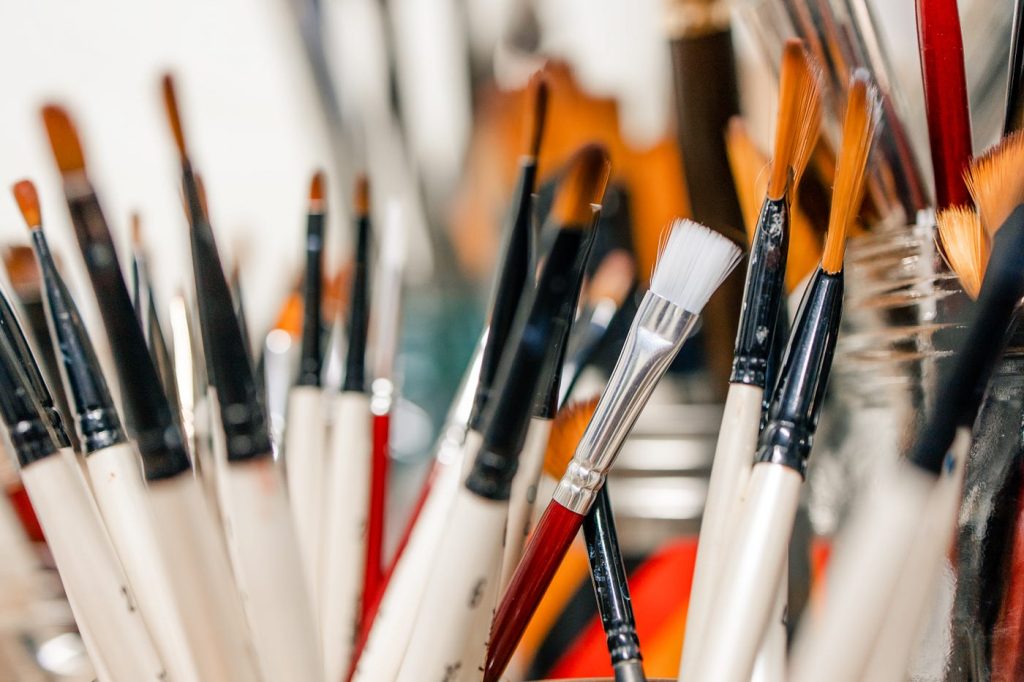
The Anatomy of Acrylic Brushes
Acrylic brushes are a tool of artistic expression, its anatomy finely tuned for creativity. At its heart lies the ferrule, a metal clamp securing the bristles to the handle. These bristles, often made of synthetic or natural fibres like hog hair or sable, possess varying lengths and textures, each influencing the stroke’s character. The handle, typically crafted from wood or plastic, provides stability and control to the artist’s hand. Together, these components of the acrylic brushes translate the artist’s vision onto the canvas with precision and fluidity.
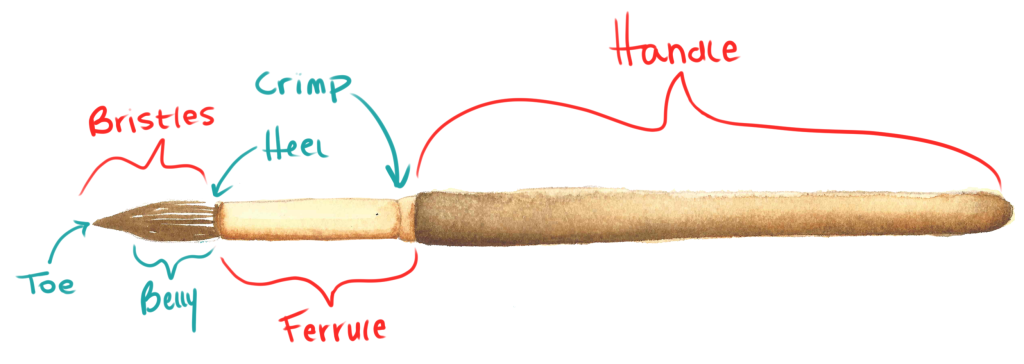
Different Types of Brushes
When you visit your local art supply store, you will be bamboozled by the sheer variety of a paintbrush. Some have rounded tips, some have a flat tip, while others are just broad. Therefore, we have compiled a list of 8 different types of acrylic brushes, which will clarify your doubts and help you make an informed decision.
1. Flat Brushes
Flat brushes or wash brushes give you bright, bold, and seamless strokes. These acrylic brushes rapidly disperse colours. The edge of the flat brushes can be used for stripes, straight edges, and fine lines. The brush’s bristles are held by a flat bracelet, which evenly spreads out the bristles into a flat rectangular shape. They are primarily employed in shading, washing, and blending.
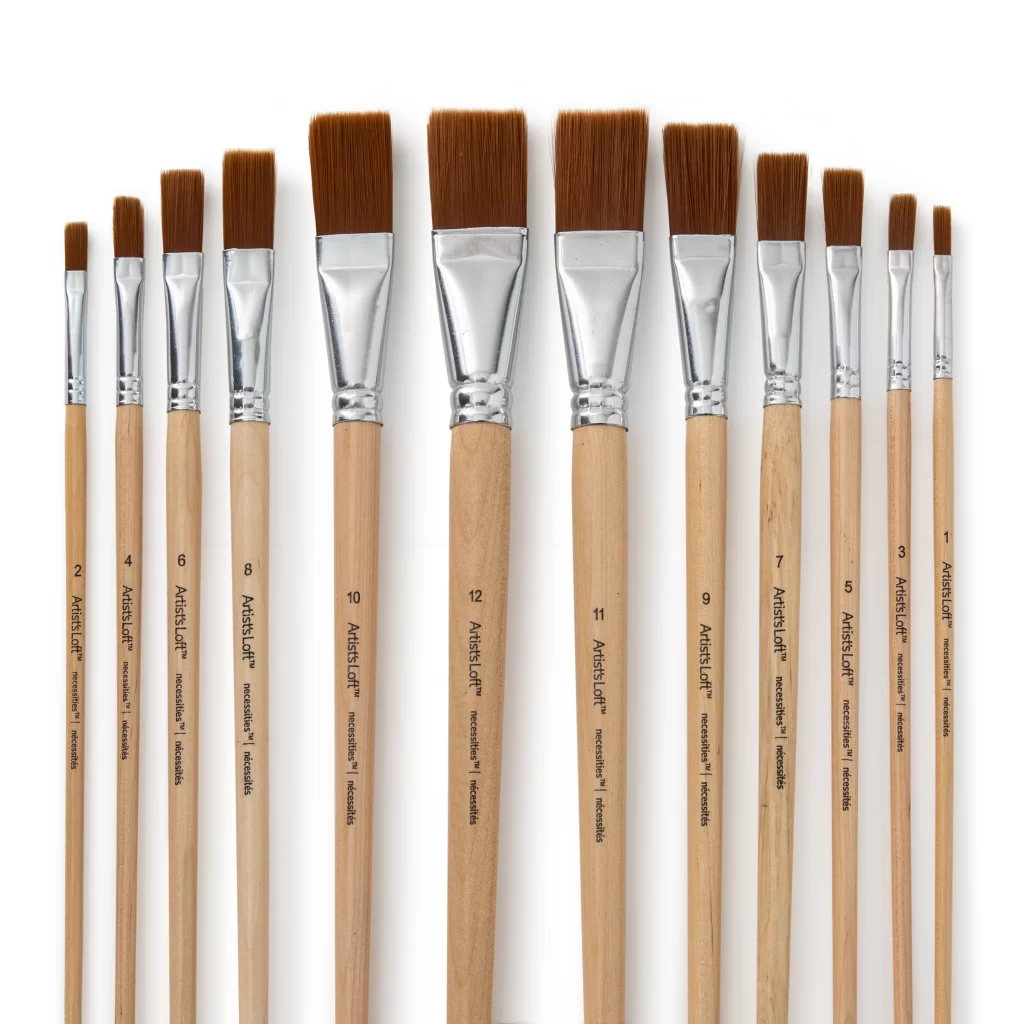
Flat brushes are the best for drawing skies and landscapes due to their uniform bristles. A flat brush’s carrying capacity is typically dictated by the number of bristles it has as well as its length. Paint will be held in place longer by a synthetic bristle brush with shorter hairs than by a mixed or long-haired brush.
2. Round Brushes
Round brushes are the most versatile type used for precise washes, swiftly covering wide areas, and drawing lines of all sizes. They work well for detailed work, outline creation, and sketching. However, you must use thinned paint instead of thick. If you use just the tip, the lines will be thin. With added pressure round brushes give you thick lines. They come in a range of sizes and bristle types, including synthetic versions of hog, sable, pony, and other varieties.
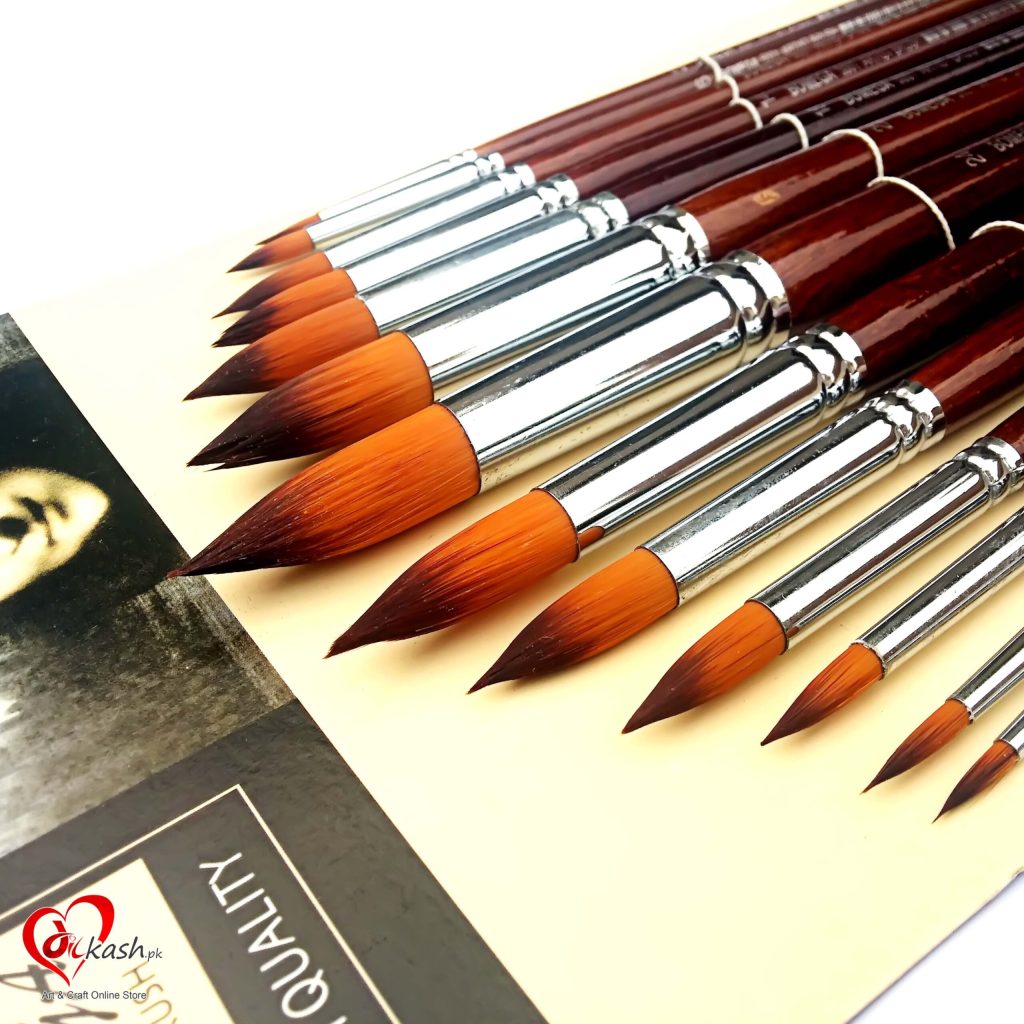
Round brushes have round ferrule. These acrylic brushes typically have a soft, rounded edge or a pointed tip. The narrow handle design of these brushes makes them flexible and it feels like holding a pencil or pen. Round brushes are available with blunt or pointed tips. The pointed round is best for fine detail. When used in a scribbling motion on their sides, they will create an erratic, fractured patch of colour.
3. Rigger Brushes/ Liner Brushes
Typically, rigger brushes have very long bristles on thin, round ferrules. Also called the liner brushes, they have a square or flat tip. These acrylic brushes are great for applying smooth, long, thin, and continuous strokes. Despite their size, they can hold a lot of fluid paint. Rigger brushes are typically used for calligraphic, linear, and tendril marks as well as delicate branches and letters. Liner brushes can work with ink (for signatures), acrylic, and oil paint. While they can be used dry as well, rigger brushes function best when submerged in water.
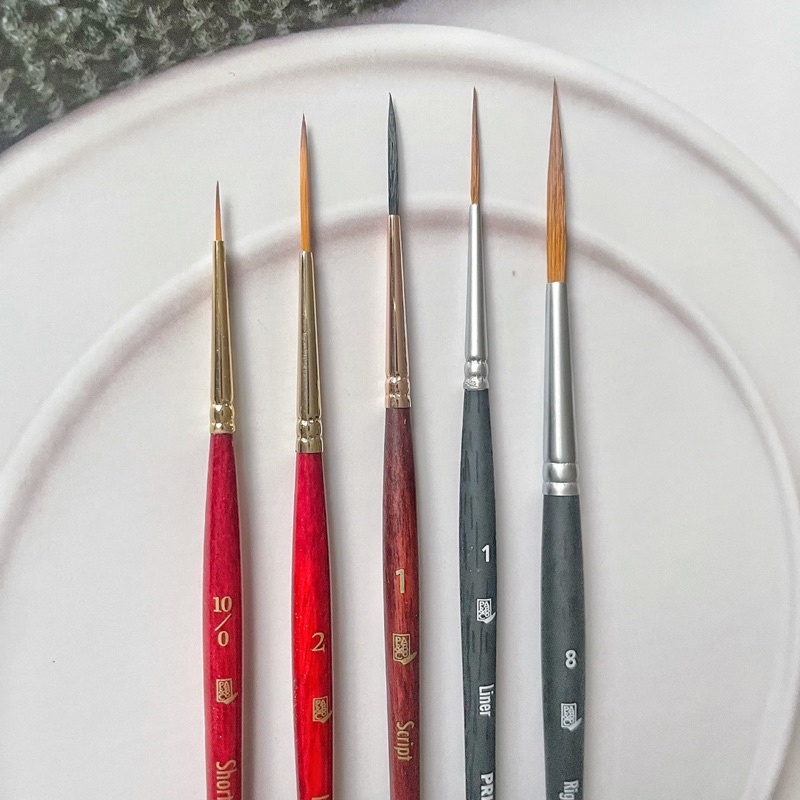
4. Fan Brushes
Fan brushes are speciality brushes. They create multiple lines or dots at once and are great for creating unique textures. A short, flat ferrule in a fan brush arranges the soft bristles so that they resemble a fan. The fan brush can be used to paint trees, shrubs, grasses, and other abstract watery designs. They work well for both blending and adding delicate highlights to the painting’s darker areas.

These speciality brushes can be used to stipple or flick paint onto the canvas, softening the hard edges of a painted form. If you’re looking for a blurred effect or to make a gradient change appear smooth and subtle, fan brushes are a useful brush shape because the bristles are generally thinner and not heavily layered to avoid picking up too much pigment.
5. Angled Brushes
Angled brushes will give you clean lines if your edge is near another object or if you want a straight, precise line. It is therefore useful for drawing petals, leaves, and other organic forms. A member of the flat brushes’ family, the hairs at the end are angled and flat. They work well for filling in corners and creating curved strokes. They can also cover large areas. The angled brushes’ tip allows them to reach small areas. Their design makes it possible to switch between thick and thin lines quickly.

6. Filbert Brushes
Filbert brushes are another one of the speciality brushes and a member of the flat brushes family. Filbert brushes are ideal for washes because of their thick, flat ferrule, long bristles, chiselled round-edged bristles, and ability to hold a large amount of water. These brushes are perfect for blending and stroking as well because the bristles stay together when wet. These speciality brushes are the best tools for base coating, which due to their shape eliminates ridges.
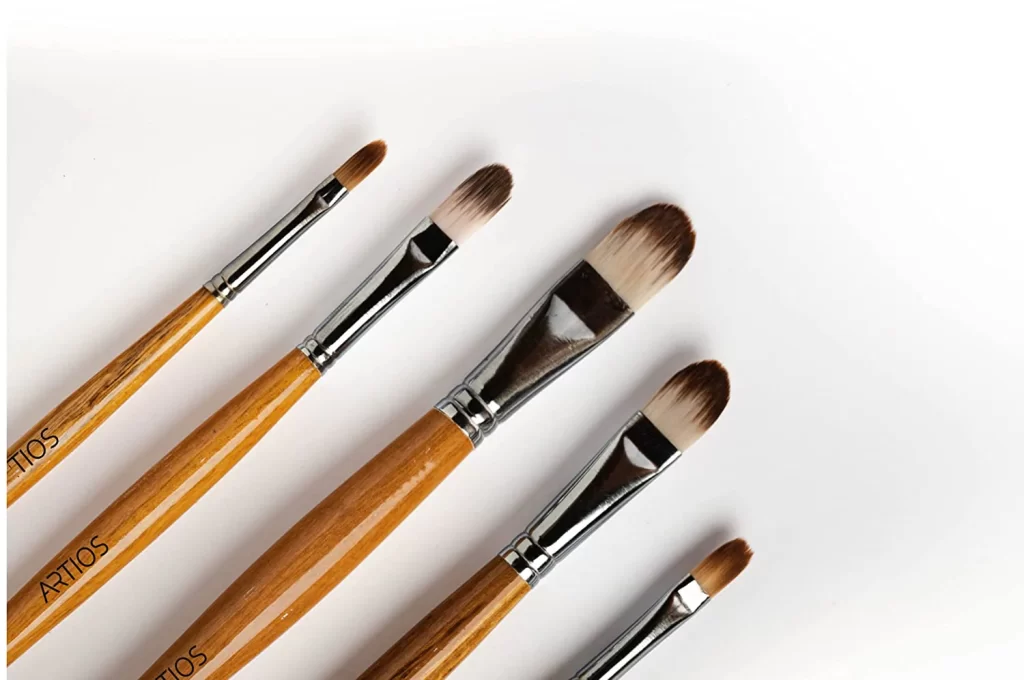
Filbert brushes can produce a broad variety of marks, from linear to broad. They can also be used on their side in a scribbling motion to create a flat patch of colour without any noticeable brush strokes. When combined with dry pigment at the tip, it can also produce rough textures and hazy borders between colour fields. Depending on the thickness and angle of the pigment, Filbert brushes can create a wide range of marks and effects.
7. Foam Brushes
Foam brushes are an unusual choice among artists. Foam brushes are made to hold large amounts of paint, primer, and stain. They can create a very smooth finish on a finished project, but you do need to take care to ensure that no air bubbles are left behind. You can simply discard foam brushes after you finish your task as they are inexpensive. Foam brushes are perfect for use on trim, furniture, and cabinets.
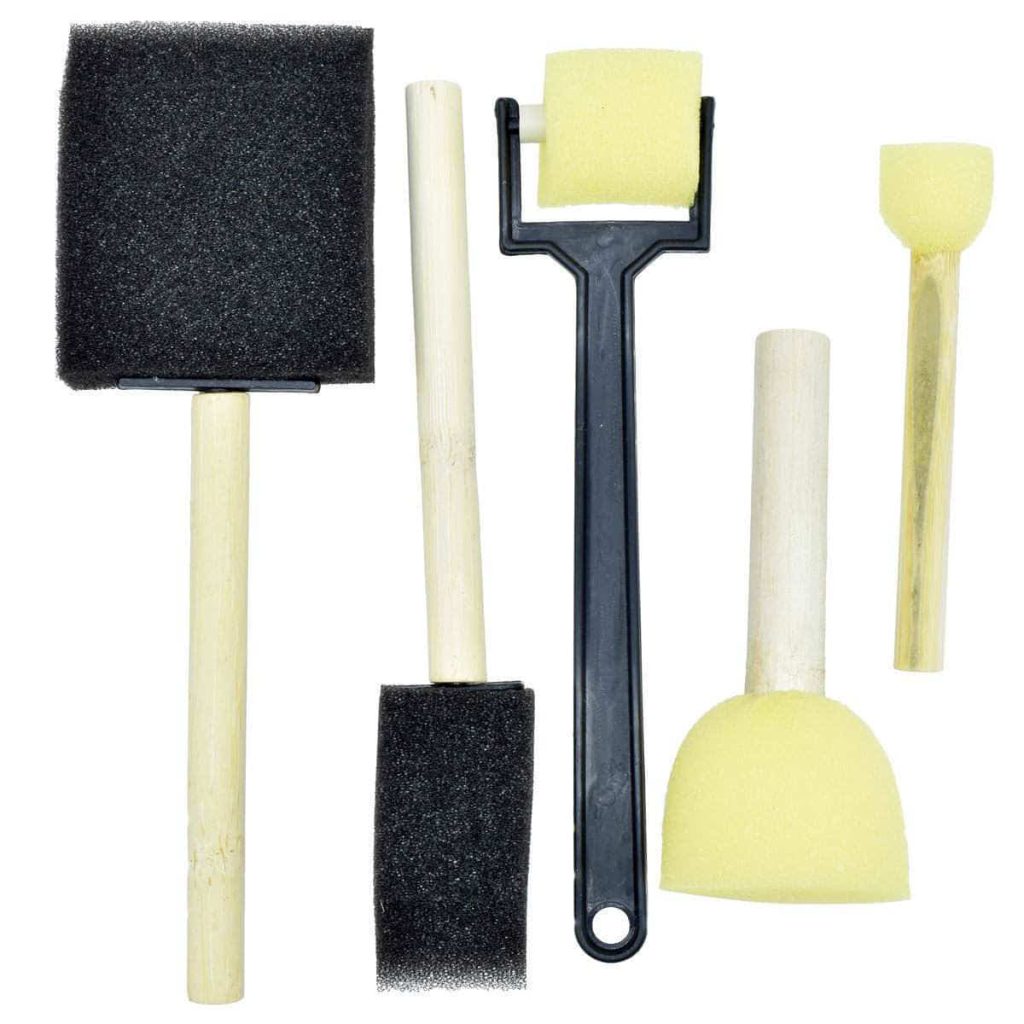
8. Bright Brushes
Similar to flat brushes, bright brushes have short stiff bristles. It is distinguished by a flat ferrule with shorter bristles and edges that curve inward at the tip. They are perfect for acrylic and oil paints because they don’t retain much water. Bright brushes work best for controlled, brief strokes and are primarily used for paint blending. It is an excellent tool for working up close, dry brushing, making scratchy strokes, and dabbing. These vivid brushes are frequently used to clean up a disorganized painting.
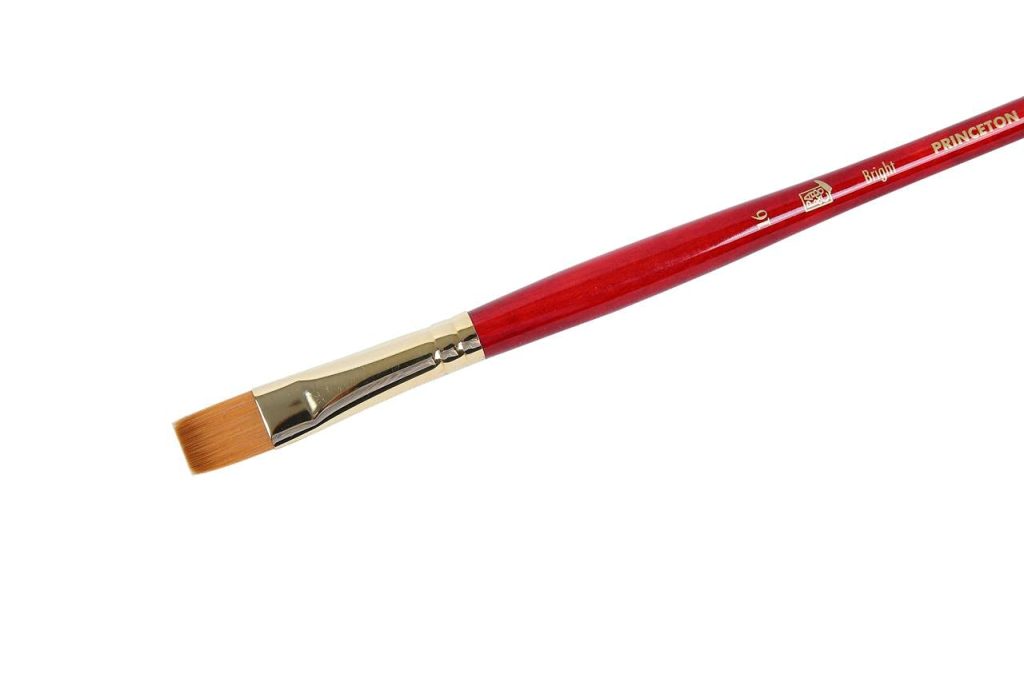
Image Courtesy – Paint By Numbers Paradise






